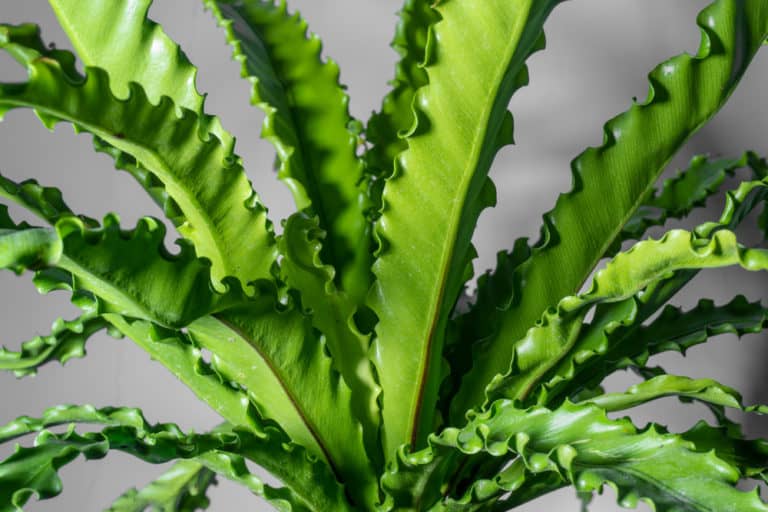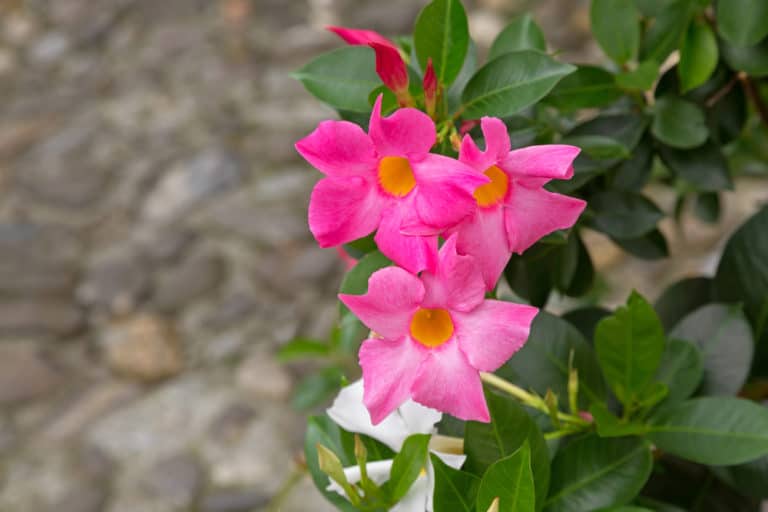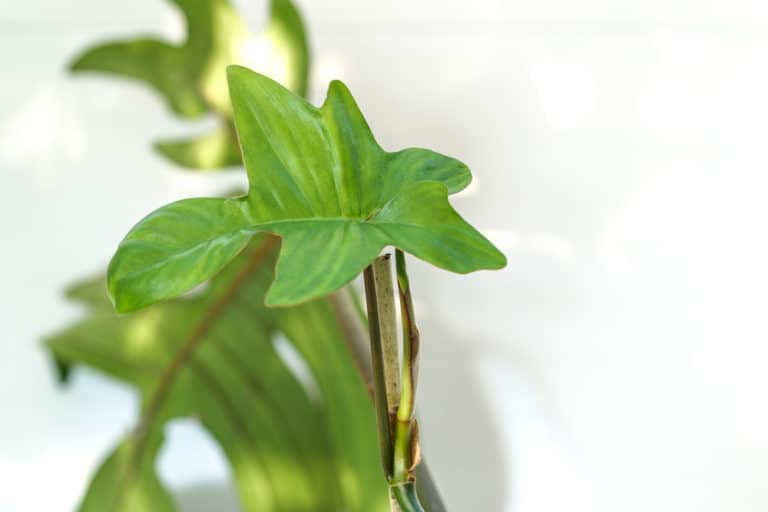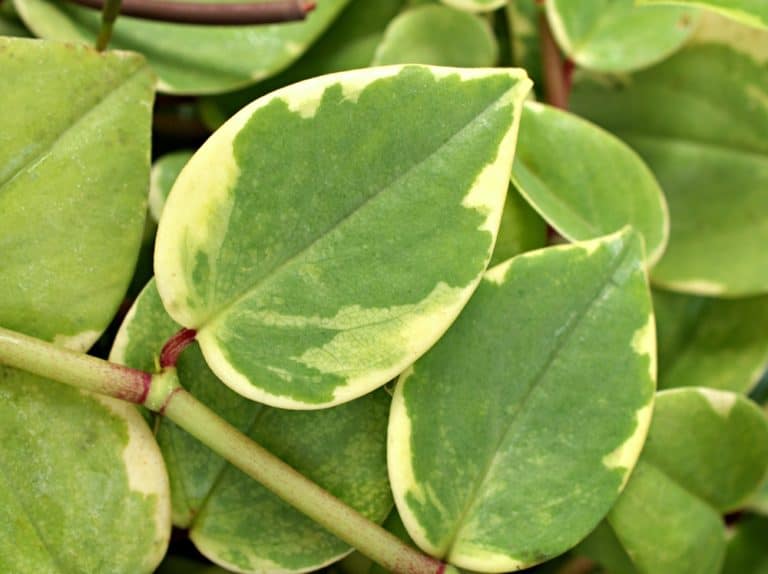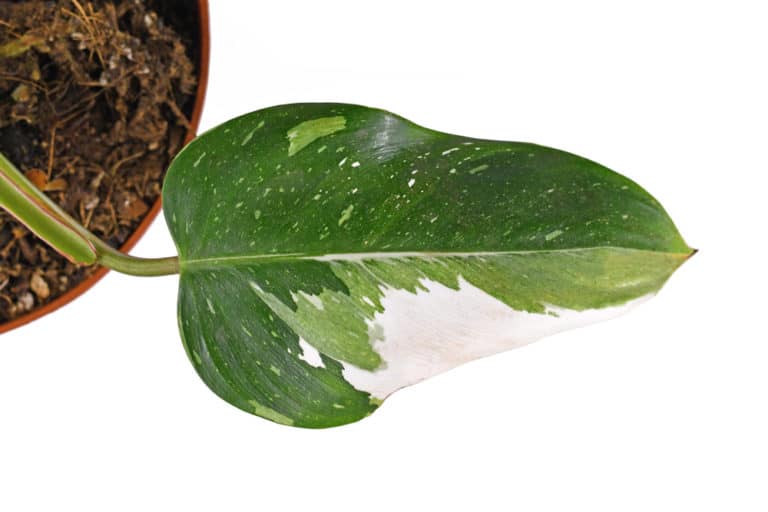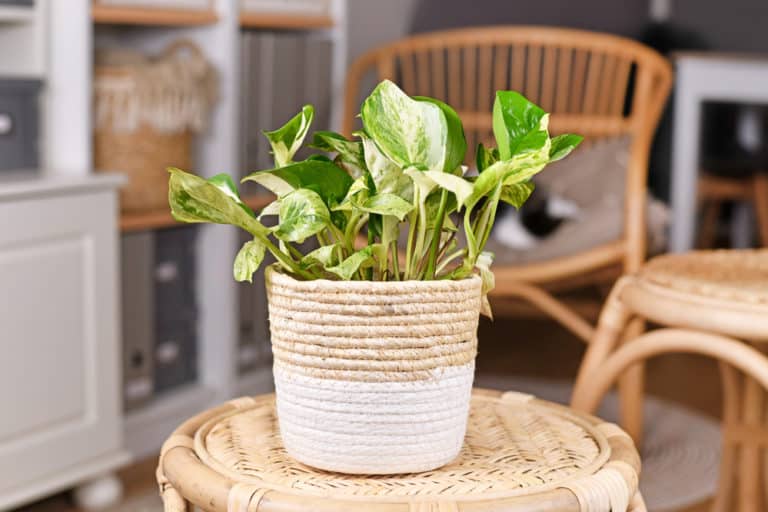Hoya Kerrii ‘Sweetheart Plant’ Care Guide (2024)
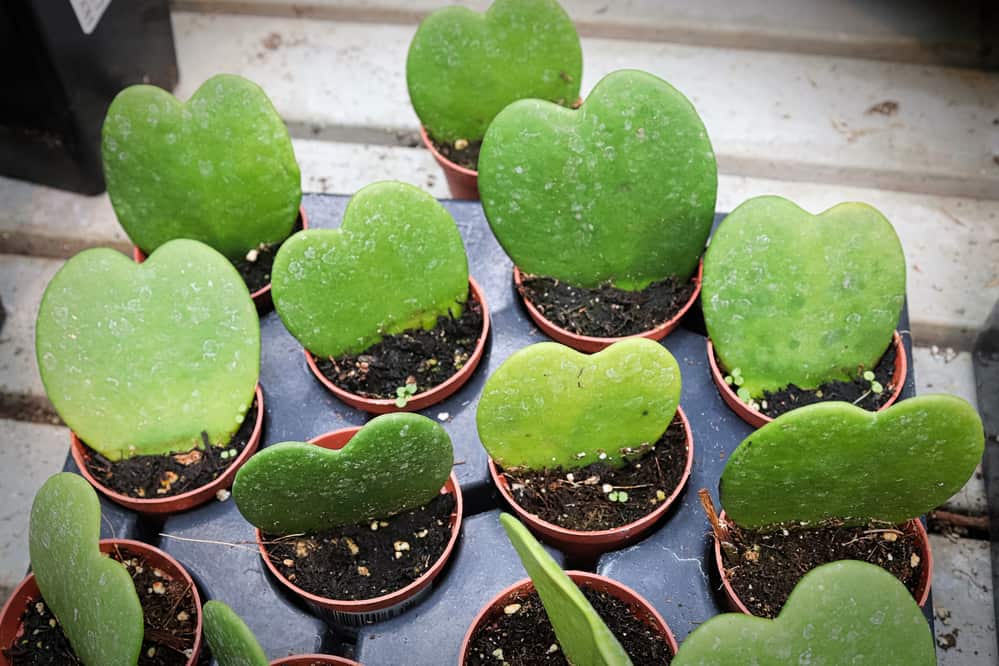
Hoya kerrii is an absolutely adorable plant, but don’t make the mistake of buying those single leaves in a pot.
While a single Hoya heart is a popular Valentine’s Day gift, those leaves won’t develop into an actual vine.
They might last a couple of years just as they are, but it’s better to have a sprawling vine covered with dozens of those cute heart-shaped leaves.
| Scientific Name | Hoya kerrii |
| Common Name | Sweetheart Plant, Valentine Hoya, Wax Hearts |
| Light | Bright indirect light to full sun |
| Watering | Monthly, water when the soil is dry |
| Temperature | 65 to 80ºF (18 to 27ºC) |
| Hardiness Zone | 11 to 12 |
| Humidity | 40 to 60% |
| Soil Type | Loose, quick draining |
| Soil pH | 6 to 7 (mildly acidic to neutral) |
| Fertilizing | A balanced feed once a month in spring and summer |
| Repotting | Every 2 years |
| Pruning | Beginning of the growing season |
| Propagation | Root in soil or water |
| Toxicity | Not toxic to humans and pets |
| Mature Size | 13 feet as a houseplant |
| Bloom Time | Summer |
What’s Unique About Hoya Kerrii?
The Hoya kerrii plant is native to Indo-China, where it was first discovered in the early 20th century. They grow as climbing vines in the tropical forests.
Hoya kerrii plants are loved for their perfectly heart-shaped succulent leaves, which grow on vines that can stretch more than 10 feet under good growing conditions.
Hoya plants are also considered among the best air purifying plants. They’re effective at removing 5 common volatile organic compounds (VOCs), including benzene and formaldehyde, from indoor air.
Growing Hoya kerrii is easy, too, so it’s a great plant for new gardeners who want to add a whimsical touch to their home or office.
Hoya Kerrii Care
In the tropical forests of Indo-China where Hoya kerrii originates, these climbing vines grow under the tree canopy in hot and humid conditions.
You won’t have to recreate that steamy atmosphere in your home to provide good Hoya kerrii plant care, thankfully.
For your Hoya heart care, it’s enough to find it a relatively sunny spot with standard indoor temperatures and humidity levels.
Light
In its native tropical forests, the Hoya kerrii grows as an understory vine, climbing up the tree trunks to reach the light.
However, the canopy filters the bright tropical sun, so they are used to dappled light.
In your home, Hoya kerrii light requirements are pretty easygoing, ranging from full sun to semi-shade. You should aim for between 10,000 to 20,000 lux.
An east or west-facing window would be ideal for your Hoya kerrii, although some growers report great success with keeping them in the full sun of a southern exposure.
If you can’t meet your Hoya heart light needs with natural light, an LED or fluorescent plant light is a great option.
Watering
There’s a lot of rain in summer in Hoya kerrii’s native habitat, but the winters are quite dry, with no more than one day a week of rain.
As a result, Hoya kerrii has developed succulent leaves that can store water for extended periods of time, so it has very undemanding watering needs.
In fact, wait to do your Hoya kerrii watering when the soil has almost completely dried out.
You shouldn’t need to stick your finger in to test the soil moisture; just wait until the pot is very lightweight.
Then, water Hoya heart by soaking the whole pot in a pail of water until no more bubbles rise up, and then let all the excess water drain out. Never let it sit in a saucer filled with water.
Temperature
In Indo-China, daytime temperatures range from 88 to 95ºF (31 to 35ºC), and the nights stay between 73 to 79ºF (23 to 26ºC).
In your home, the acceptable Hoya kerrii temperature range is 65 to 80ºF (18 to 27ºC).
You should have no trouble providing an adequate temperature for Hoya heart at your normal room temperature. You can also move it outside in the hot summer for a few months of really hot weather.
However, they do not have much temperature tolerance below 50ºF (10ºC), so keep it out of drafts and away from cold windows.
It has no frost hardiness, so never leave it outdoors as cooler weather approaches.
Humidity
Hoya kerrii humidity requirements are actually pretty easy-going, considering that in its native home levels stay between 65 to 85% year-round.
While the ideal humidity for Hoya heart is probably around 60%, it will grow quite happily at 40%, which is a pretty standard indoor humidity level.
In winter things might get a little drier, so you can always mist the leaves occasionally or set your Hoya kerrii pot on a pebble tray filled with water.
Even grouping plants together can help to raise the humidity level in their vicinity.
Of course, the gold standard is a small humidifier to create a moister microclimate around your plants.
Soil
Hoya kerrii soil must be well-draining. That’s absolutely essential to keep your succulent vine growing well.
In its native forests, it grows in scant amounts of soil, and gets much of its nutrients from the bark of trees as it climbs and its aerial roots take hold.
The required pH level for Hoya heart is 6 to 7, or mildly acidic to neutral.
You do not have to make your own soil mix for your Hoya kerrii; it’s easy to find a commercial soil for Hoya heart.
Use a succulent, cactus, orchid or aroid soil, all of which will provide the loose, porous substrate that Hoya kerrii requires.
Fertilizer
It’s not necessary to use a lot of fertilizer for Hoya heart. In fact, too much fertilizer is worse than too little.
However, regular feedings of a liquid plant fertilizer with a balanced fertilizer ratio of 20-20-20
can help to maintain healthy growth.
The best time to use Hoya kerrii fertilizer is shortly after you’ve watered, so that the soil is moist throughout and the fertilizer solution won’t just run through.
Start by feeding once a month in spring and summer, and if you start to see a build-up of salts on the soil, cut back to once every 3 months.
Potting & Repotting
Hoya kerrii repotting should be done every 2 years, or before if you see signs of it becoming rootbound.
However, don’t be in too much of a rush, because Hoya kerrii actually likes a bit of a tight fit.
In fact, once your Hoya kerrii is big enough to bloom, being pot-bound will actually encourage it to flower.
Still, repotting Hoya heart is a good opportunity to refresh its potting soil, which may have become compacted over time.
Only go up one pot size, and make sure the new pot has good drainage. A terra cotta pot is perfect for your Hoya kerrii, as it will help keep the soil on the dry side.
Pruning
Because it is so slow-growing, you will not find much need for Hoya kerrii pruning.
However, you can trim vines to control their length and encourage bushier growth.
Do not be hasty when cutting Hoya heart; new vines will look bare for quite some time before its leaves develop.
As well, do not trim off the flower stalks when they have finished blooming, as they will again be flowering the next year.
Of course, you should always remove any dead or damaged leaves, as not only do they mar the appearance of your vine, but also can attract pests and harbor disease.
Propagation
You can easily propagate Hoya heart with stem cuttings or by layering.
For Hoya kerrii propagation by layering, simply pin down a stem to the soil surface in the same pot, or a small one right next to it.
Roots will develop, and all you do is snip the stem between the new plant and the mother.
For stem cuttings, cut a length of stem with at least a few leaves, right below a node. Strip off all but the top leaves, and put the cuttings in a jar of water or a moist soil medium.
Keep things warm and moist. Be patient and wait a few months to see if they develop roots.
You can then plant out the new plants in their own pots.
Also, make sure to check out our in-depth Hoya krimson queen plant care guide.
Common Problems of Hoya Kerrii
One of the great things about growing this fascinating vine is that there are very few Hoya kerrii problems. It’s extremely slow-growing and low-maintenance.
However, if you do get some problems with Hoya heart, it’s important to catch and solve them early so that you will continue to see those beautiful heart-shaped leaves.
Pests
Hoya kerrii pests are not terribly prevalent, but no houseplant is completely immune from bugs.
However, spraying or wiping down the leaves of your Hoya heart once a month with a solution such as insecticidal soap or neem oil and water will help to keep bugs at bay.
Mealybugs are public enemy number one when it comes to Hoya kerrii. The small fuzzy white bugs can do some serious damage as they suck on the sap.
Just wipe them off with a cotton ball dipped in rubbing alcohol.
Spider mites are rarely seen, but their yellow bumps on the leaves, and of course their sticky webs, let you know they’re around.
The best method for getting rid of them is to hose down the whole plant in the shower or sink.
Diseases
There are remarkably few Hoya kerrii diseases to worry about.
However, root rot is always a concern for house plants, and Hoya kerrii is no exception. This can occur when the soil is left sopping wet and the roots can’t breathe.
Once this disease has taken hold, you will observe soft, yellow leaves, and mushy stems.
Upon investigation, you will find blackened, smelly roots under the soil surface.
The only way to save your Hoya heart is to cut out all the infected parts. Then, clean off all the soil you can, and replant it in fresh soil in a new or disinfected pot.
Growing Problems
You will encounter some growing problems if you don’t give your Hoya kerrii the growing conditions it requires. That shouldn’t be hard because it is remarkably easygoing.
However, if you do have a sick plant, you should be able to figure out what is wrong and fix it.
Rotting leaves may mean that your Hoya kerrii is too wet or too cold.
Wrinkled leaves are a clear indication that you have let your Hoya kerrii’s soil dry out too much. It’s time to give it a good soaking.
Curling leaves could be a sign of either over or underwatering. Check the soil moisture level and proceed from there.
Toxicity of Hoya Kerrii
Hoya heart is not toxic to humans or pets.
While it may not taste good, there is no actual toxicity associated with this vine, making it a safe choice for growing in homes with children and animals.
However, in the rare case where a person has a latex allergy, the sap does pose a risk.
For Humans
Hoya kerrii isn’t usually toxic to humans, but its sap does contain latex, which some people have a severe allergy to. They must exercise caution around hoya plants.
However, even without an allergy, it’s best to be careful when growing this plant in a space shared with children.
The adorable heart-shaped leaves could be irresistible to young children, thinking that they’re toys. That could result in catastrophic damage to this slow-growing plant.
As well, if you have used any insecticidal sprays or fertilizer on your Hoya kerrii, you don’t want children to handle the plant.
Toddlers also will not be able to tell the difference between safe plants and toxic ones, so simply having a ‘no touching’ policy for all houseplants is a wise move.
For Pets
Pets are not at risk of a life-threatening reaction from exposure to your Hoya kerrii. That’s a good thing.
However, cats and dogs should not be given the opportunity to sample the foliage of this or any other plant.
Both species are carnivores, and their digestive systems are not well-equipped to handle much in the way of plant material.
If your cat or dog eats too much of your Hoya kerrii’s leaves, they could have a very unpleasant bout of gastrointestinal distress involving vomiting and diarrhea.
Growing your Hoya kerrii in a hanging basket or on a high windowsill will prevent that from happening.
Hoya Kerrii Appearance
It can be hard to believe that the Hoya kerrii appearance isn’t manufactured.
The almost perfect heart-shaped leaves look like a Valentine’s Day novelty gift, and in fact single rooted leaves are sold for just that purpose.
However, Hoya kerrii and its variegated cultivars are very real indeed, and a gorgeous addition to an indoor garden.
Foliage
The evergreen foliage of Hoya kerrii has made this tropical vine very much in demand, and with good reason.
Each leaf is shaped like a classic Valentine’s heart, and can grow to 2 to 6 inches long. They are connected to a short petiole at the base of the heart.
They are thick and leathery, and store water in their succulent tissues. They are almost completely flat, with a slightly textured surface.
They have a medium green color, which may be more yellow in higher light locations.
Spray or wipe the leaves on a regular basis to keep them clean and free of dust and grime.
Flowering
The Hoya heart flower is almost as good a reason as the leaves for growing this tropical vine.
Hoya kerrii flowering will occur after several years, once the plant has achieved sufficient maturity. Blooms appear in summer.
The star-shaped flowers are small, with a slightly fuzzy white corolla topped with a smaller, waxy pinkish corona.
They release a sweet fragrance at night, and are long-lasting.
After it has finished blooming, do not cut off the flowering spikes, as flowers will appear in the same place again.
Flowering can be encouraged by keeping humidity high and by using a fertilizer with a higher amount of potassium.
Size and Growth
While it has a very slow growth rate, the eventual size of Hoya kerrii can be a vine as long as 13 feet, with a spread of 3 feet.
When your Hoya kerrii is young, you can expect that it will put out very little new vegetation at first, as it will be concentrating its energies on developing strong roots.
However, growth will speed up as it matures.
One of the quirks of Hoya kerrii is that when new vines develop, they stay bare for quite a while. Don’t despair, and definitely don’t cut them off; eventually, new leaves will form.
Hoya Kerrii Fragrance
Hoya kerrii fragrance is remarkably sweet and strong, and one of the many delights of growing this vine.
The scent is produced by the long-lasting flowers that will bloom when your Hoya kerrii is several years old, and every summer after that.
The fragrance is stronger later in the day, so keeping your Hoya kerrii near where you sit on summer evenings is a nice touch.
While most people appreciate the delicate scent, it can trigger an allergic reaction in sensitive individuals.
If this is an issue for you, you can simply cut out the flowering stalks before they bloom.
Suggested Uses for Hoya Kerrii
Because Hoya kerrii is so well suited to growing indoors, you have lots of options on where to place it in your home.
While it doesn’t demand high humidity, Hoya kerrii does appreciate it, so if you have a sunny bathroom, it would be an ideal spot for this vining houseplant.
It’s great to grow in a hanging basket or on a high ledge, where its stems can trail down, or you can train it over bamboo hoops as a tabletop plant.
In a tropical climate you can plant it at the base of a tree and let it climb its way up the trunk, or provide it with a sturdy trellis to grow over.
FAQ
What is Hoya kerrii?
Hoya kerrii is an evergreen plant native to the tropical forests of Cambodia, Thailand, and Laos, where it grows as an epiphytic vine. It is now a popular houseplant.
How to identify Hoya kerrii?
Hoya kerrii has medium green heart-shaped succulent leaves which grow on long vines which become woody with age. In summer it produces clusters of small, star-shaped white flowers.
How to care for Hoya kerrii?
Hoya kerrii should be grown in a warm environment with moderate humidity in very loose and porous soil, in moderate to very bright light conditions.
How to grow Hoya kerrii indoors?
Hoya kerrii can be grown as a potted plant in normal room temperatures and humidity, in bright light to semi-shade, and watered and fed infrequently.
How to grow Hoya kerrii outdoors?
Hoya kerrii can be grown outdoors in zones 11 to 12, planted in well-draining soil in a shady location. It can be trained up a tree or artificial support such as a trellis.
How fast does Hoya kerrii grow?
Hoya kerrii has a slow growth rate when it is young, but will speed up to a certain extent once it has developed a strong root system.
How tall does Hoya kerrii grow?
Hoya kerrii vines can grow as long as 13 feet, with a spread of 3 feet. However, you can also prune it to make it bushier as opposed to long.
How to make Hoya kerrii grow faster?
Hoya kerrii will grow faster when it is given the optimum conditions of high humidity and heat, with good air circulation and consistently bright light.
How to stake Hoya kerrii?
Hoya kerrii can be trained over bamboo hoops, or up a sphagnum moss pole. You can also use a trellis or let it twine its way up a tree outdoors.
How to pot Hoya kerrii?
Hoya kerrii should be potted in very loose and easily drained soil, in a terracotta pot with drainage holes. It must never be allowed to sit in wet soil.
How to revive Hoya kerrii?
Hoya kerrii leaves will shrivel when the soil is too dry, but it may be possible to revive it by plunging the pot into room temperature water until the soil is fully hydrated.
Why is my Hoya kerrii dying?
If your Hoya kerrii has yellow leaves and mushy stems, as well as black roots, it has root rot. Try cutting off all the rotting parts and replant it in fresh soil.
Why is my Hoya kerrii drooping?
Your Hoya kerrii is probably drooping because it is overwatered. It’s best to remove it from its wet soil and plant it in a fresh, well-draining soil mix.
How cold can Hoya kerrii tolerate?
Hoya kerrii prefers to grow at temperatures between 65 to 80ºF (18 to 27ºC), but will start to suffer damage to its foliage below 55ºF (12ºC), and frost will kill it.
How to get rid of pests on Hoya kerrii?
Hoya kerrii pests can usually be controlled by using an insecticidal soap or neem oil solution on its leaves on a regular basis, either by spraying or using a soft cloth.
Is Hoya kerrii toxic to cats?
No, Hoya kerrii is not toxic to cats. However, felines are carnivores and their digestive systems may react to ingesting too much plant matter with vomiting and diarrhea.
Is Hoya kerrii toxic to dogs?
No, Hoya kerrii is not toxic to dogs. However, dogs are naturally meat-eaters and so they will have difficulty digesting too much vegetation, which can cause vomiting and diarrhea.
Is Hoya kerrii toxic to children?
No, Hoya kerrii is not toxic to children. However, the latex in the sap can cause an anaphylactic reaction if they have a latex allergy.
Is Hoya kerrii toxic to humans?
No, Hoya kerrii is not toxic to humans, but people with a latex allergy can have a severe reaction if they are exposed to the sap.
Does Hoya kerrii have a scent?
Yes, the summer-blooming Hoya kerrii flowers have a sweet scent that is stronger in the evening. The evergreen foliage, however, has no fragrance at all.

